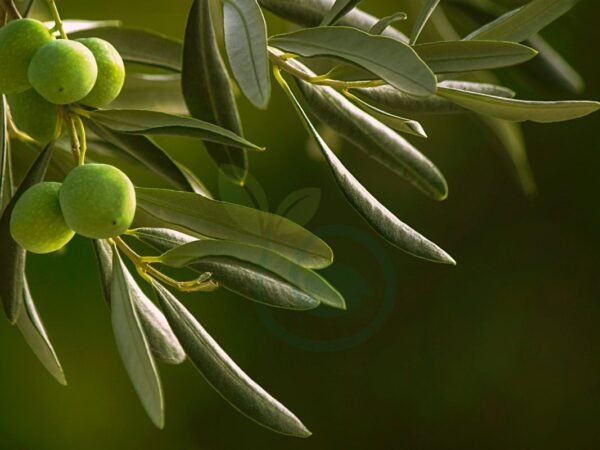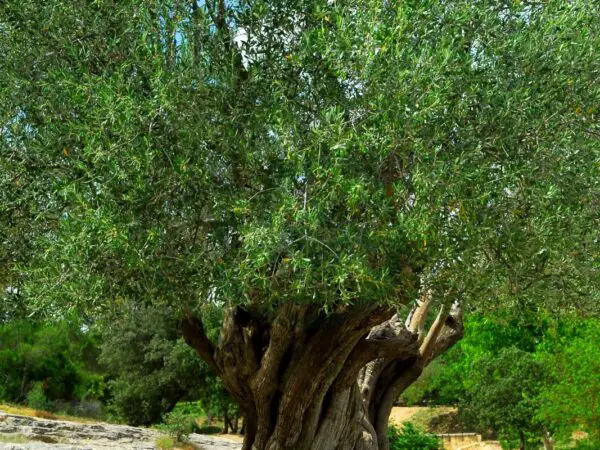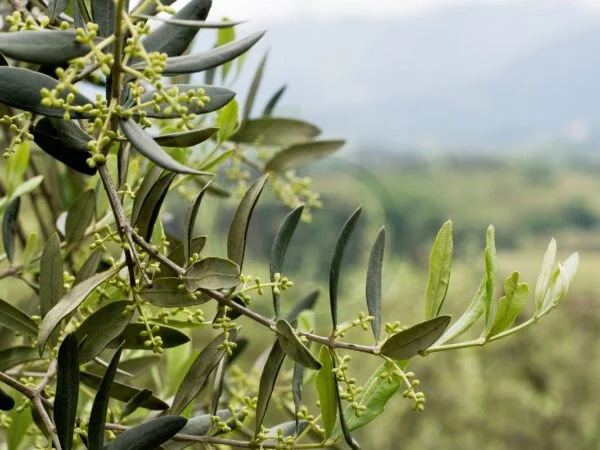Ever wondered how to treat black scale on olive trees effectively with oil sprays? Dealing with this pesky issue can be a real challenge for olive tree enthusiasts. But fear not, as we've got you covered! From natural remedies to expert advice, we'll explore various strategies that are both effective and environmentally friendly. Say goodbye to those stubborn black scales and hello to healthy, thriving olive trees!
Key Takeaways
- Regularly monitor olive trees for black scale infestations to catch them early.
- Consider using chemical control methods for severe black scale outbreaks, following manufacturer guidelines.
- Implement biological control strategies like introducing natural predators to manage black scale populations.
- Address heavy infestations by combining different control methods for a more effective approach.
- Manage light and moderate black scale infestations promptly to prevent escalation.
- Adopt an Integrated Pest Management (IPM) approach that combines various control tactics for sustainable black scale management.
Understanding Black Olive Scale
Pest Identification
Black scale insects are small, oval-shaped bugs with a dark, waxy covering. Identifying these pests correctly is crucial for effective treatment. It's essential to distinguish black scale crawlers from other similar pests to make accurate decisions about treatment methods.
Proper identification of black scale and crawlers helps in selecting the right treatment approach. For example, if you mistake it for another pest and use the wrong remedy, it may not be effective against black scale.
- Pros: Accurate identification leads to successful treatment.
- Cons: Misidentification can result in ineffective treatments.
Lifecycle Overview
Understanding the lifecycle stages of black scale is vital for determining when to treat them effectively. These insects go through various phases like eggs, nymphs, and adults. Each stage may require different treatments for optimal results.
Different life stages of black scale demand specific treatment strategies tailored to address their vulnerabilities at each phase. For instance, targeting eggs might require a different approach than dealing with adult scales.
- Key Information: Proper timing based on lifecycle stages enhances treatment success.
Monitoring for Black Scale
Signs of Infestation
Black scale infestations on olive trees can be identified through several signs. Sooty mold found on leaves and branches is a clear indicator of black scale presence. This mold is caused by the honeydew secreted by the scales, attracting ants and other insects to the tree.
Moreover, if you notice yellow spots or discoloration on your olive tree's leaves, it might be due to black scale feeding activities. These signs are crucial in early detection and prompt action against black scale infestations.
Decision-Making for Treatment
When deciding how to treat black scale on olive trees, assessing the severity of the infestation is vital. Understanding how widespread the issue has become will help determine whether treatment is necessary. Considering factors such as overall health and age of the olive trees plays a significant role in treatment decisions.
For guidance on treatment options, seeking advice from experts or agricultural extension services can provide valuable insights into effective methods for combating black scale infestations.
Chemical Control Methods
Insecticides Selection
When dealing with black scale on olive trees, choosing the right insecticide is key. Opt for systemic insecticides as they effectively target black scale populations. However, it's crucial to consider how these insecticides might affect beneficial insects and the overall environment.
To ensure effective control of black scale, it's essential to select appropriate insecticides that specifically target this pest. For instance, using systemic insecticides can help eradicate black scales efficiently without harming beneficial insects or causing unnecessary environmental damage. By being mindful of the impact of insecticides on other organisms and ecosystems, you can achieve successful pest management while maintaining ecological balance.
Application Techniques
Properly applying insecticides is vital in ensuring thorough coverage and maximum efficacy against black scale infestations. Timing plays a significant role in the effectiveness of treatment; therefore, it's important to apply insecticides during the recommended time of day for optimal results. Following label instructions meticulously is crucial to prevent both underdosing (which may not eliminate the pests) and overdosing (which could harm beneficial insects or contaminate the environment).
When treating olive trees affected by black scales, employing precise application techniques will enhance the efficiency of your efforts in eradicating these pests effectively. Applying insecticides correctly guarantees that all parts of the tree infested with black scales are adequately covered for successful treatment outcomes. Moreover, adhering closely to recommended application times ensures that treatments coincide with peak vulnerability periods for better elimination results.
Biological Control Strategies
Natural Predators
Encouraging biological control agents like ladybugs, lacewings, and parasitic wasps is a natural way to manage black scale infestations. These insects are the enemies of black scale and can help keep their populations in check. By providing a suitable environment with ample food sources, such as nectar-producing plants or pollen, you can attract these beneficial insects to your olive trees. Ladybugs feed on black scale eggs and larvae, while lacewings consume both adults and juveniles. Parasitic wasps lay eggs inside black scales, eventually killing them.
By introducing these natural predators into your olive tree ecosystem, you establish a balance that reduces the need for harsh chemicals to combat pests. This method not only targets the black scale population but also helps maintain overall biodiversity in your garden by supporting various beneficial insect species.
Biopesticides
Biological control methods extend to using biopesticides derived from natural sources to combat black scale effectively. Botanical oils like neem oil are known for their ability to suffocate and kill black scale insects without harming other beneficial organisms in the environment. Unlike synthetic chemical pesticides that may have harmful effects on non-target organisms or linger in the soil long after application, biopesticides offer a safer alternative for pest management on olive trees.
Dealing with Heavy Infestations
Immediate Actions
To address heavy infestations of black scale on olive trees, start by pruning and removing heavily affected branches. This helps in reducing the scale infestations significantly. Using a high-pressure water spray can effectively dislodge black scales from the olive tree foliage, further aiding in pest control. Remember to dispose of pruned branches and fallen leaves far away from the olive tree area to prevent reinfestation.
Taking immediate action is crucial when dealing with heavy infestations of black scale on olive trees. By promptly pruning and removing heavily infested branches, you are actively reducing the population of these harmful pests. Utilizing a high-pressure water spray to dislodge black scales from the foliage also proves to be an effective method for controlling their numbers. Proper disposal of pruned branches and fallen leaves ensures that any remaining pests do not have easy access back to the olive tree.
Recovery Steps
After addressing heavy infestations, focus on supporting your olive trees' recovery by providing adequate irrigation and fertilization post-treatment. This step is essential as it helps strengthen the trees after battling severe scale infestations. Keep a close eye on new growth for signs of reinfestation; if you notice any resurgence, take immediate action to prevent further damage or spread throughout your orchard.
Supporting your olive trees' recovery post-heavy infestation involves ensuring they receive proper care through irrigation and fertilization efforts. These measures are vital in helping them regain strength after being significantly affected by black scale populations. Regularly monitoring new growth is key since it allows you to detect any signs of reinfestation early on, enabling you to intervene promptly before another serious outbreak occurs.
Managing Light and Moderate Infestations
Preventive Measures
To prevent black scale infestations on olive trees, implement cultural practices that promote tree health. Monitor soil moisture levels regularly to avoid stressing the trees. Over-fertilization should be avoided as excessive nitrogen can attract black scale insects.
Cultural practices like pruning dead branches and keeping a clean garden area help promote healthy olive trees. By maintaining optimal soil moisture levels, you create an environment less favorable for black scales to thrive. Avoiding over-fertilization prevents attracting these harmful insects due to excess nitrogen.
Targeted Treatments
For light or moderate infestations of black scale, use targeted treatments focusing on specific areas with high populations. Spot treatments using insecticides can effectively control localized infestations by targeting the affected areas directly. Sticky traps placed near olive trees are useful in capturing adult black scales before they spread further.
Targeted treatments allow for a more precise approach in controlling black scale populations without harming beneficial insects present in the ecosystem surrounding the olive trees. Using spot treatments with insecticides ensures that only the affected areas are treated, minimizing environmental impact while effectively managing the infestation.
Integrated Pest Management (IPM)
Monitoring and Thresholds
Regularly monitor black scale populations on olive trees to determine treatment thresholds. Action thresholds should be set based on the number of black scales per tree or branch. Early detection and intervention play a crucial role in preventing black scale outbreaks. For instance, if you notice an increase in black scale numbers beyond the established threshold, it may be time to implement control measures.
Cultural controls are essential in managing black scale infestations. Pruning olive trees can enhance air circulation, creating unfavorable conditions for black scales to thrive. Maintaining proper spacing between olive trees helps minimize the spread of these pests from one tree to another. Keeping the orchard floor clean by promptly removing fallen leaves and debris reduces potential habitats for black scales.
Chemical and Biological Tactics
Combining chemical and biological control tactics can significantly improve black scale management effectiveness. Using insecticides alongside natural predators offers a comprehensive approach to controlling these pests efficiently. When selecting control methods, consider the compatibility of different tactics to prevent any negative interactions that could hinder their effectiveness.
Case Study: Effective Management at Apulia Grove
Strategy Implementation
To effectively treat black scale on olive trees, develop a comprehensive strategy. Combine multiple control methods like natural enemies, horticultural oils, and insecticidal soaps. Implement these tactics systematically and consistently to combat the infestation successfully. Regularly assess the effectiveness of the strategy by monitoring the scale population and tree health.
Consistent evaluation allows for necessary adjustments in treatment approaches if needed. By combining various control methods strategically, you can create a robust defense against black scale infestations on olive trees. This proactive approach ensures that your efforts are targeted and impactful in managing the pest population.
Results and Learnings
Documenting the results of your treatment efforts is crucial to evaluating their success rate accurately. Through this documentation process, you can identify what worked well and areas that require improvement when treating black scale on olive trees. By analyzing these outcomes, you gain valuable insights into refining future strategies for more effective pest management.
Leverage past experiences with black scale treatments to enhance your future approaches towards combating this pest effectively. Sharing your findings and learnings with other olive tree growers fosters knowledge exchange within the community. Collaborating with fellow growers enables everyone to benefit from shared expertise in developing improved practices for treating black scale infestations.
Prevention and Future Management
Regular Monitoring
Continuous monitoring of olive trees is crucial to detect any new black scale infestations promptly. By keeping a record of pest population trends, you can spot patterns over time, allowing for better management strategies. Adjusting the monitoring frequency based on seasonal changes and historical data enhances the effectiveness of early detection.
To illustrate, if you notice an increase in black scale during specific seasons, such as spring or fall, you can focus monitoring efforts during these times. This proactive approach enables timely interventions to prevent widespread infestations before they escalate.
Cultural Practices
Implementing cultural practices that boost overall tree health and resilience against black scale is essential for long-term management. Regularly pruning olive trees not only removes dead wood but also helps maintain an open canopy that improves air circulation and sunlight exposure—factors that deter black scale infestation. Proper fertilization and irrigation practices support tree vigor, making them less susceptible to pests.
For instance, ensuring adequate nutrients through proper fertilization promotes strong tree growth, enabling them to withstand pest attacks better. Consistent watering practices help maintain optimal moisture levels in the soil, preventing stress on olive trees that could make them more vulnerable to black scale infestations.
Ongoing IPM Adoption
Embracing Integrated Pest Management (IPM) as a sustainable approach for controlling black scale is key to effective long-term management. Educating yourself continuously about new IPM strategies and techniques allows you to adapt your methods based on evolving best practices in pest control. Collaborating with other growers fosters knowledge sharing and collective efforts towards improving black scale management across multiple groves.
Conclusion
You've learned about the pesky black scale infesting your olive trees. From understanding its nature to implementing control strategies, you're now equipped to combat this menace effectively. Remember, vigilance is key in monitoring and managing infestations. Whether opting for chemical or biological controls, tailor your approach based on the severity of the situation. The success story at Apulia Grove showcases the power of integrated pest management. By following preventive measures and staying proactive, you can ensure the health and vitality of your olive trees for years to come.
Now it's time to roll up your sleeves and put your newfound knowledge into action. Take charge of your olive grove's well-being by implementing these strategies with care and dedication. Your trees will thank you for it!
Frequently Asked Questions
How do I identify black scale on olive trees?
Black scale on olive trees appears as small, dark bumps resembling scales. They can be found along the branches and stems of the tree. Look for sticky honeydew secretions and sooty mold that often accompany an infestation.
What are some chemical control methods for treating black scale on olive trees?
Chemical control methods include using insecticidal soap, horticultural oil, or neem oil to target black scale insects. Ensure you follow the instructions carefully when applying these treatments to effectively manage the infestation.
Can biological control strategies be effective in managing black scale on olive trees?
Yes, introducing natural predators like ladybugs or lacewings can help control black scale populations. These beneficial insects feed on the pests, offering a sustainable and eco-friendly approach to managing the infestation without harming other organisms.
How should I deal with heavy infestations of black scale on my olive trees?
For heavy infestations, consider combining chemical treatments with pruning heavily affected areas. This dual approach can help reduce the population of black scales more effectively than relying solely on one method.
What is Integrated Pest Management (IPM) in relation to treating black scale on olive trees?
Integrated Pest Management (IPM) involves using a combination of cultural, biological, and chemical control methods strategically to manage pest issues sustainably while minimizing harm to beneficial organisms and the environment when dealing with pests like black scales.
Image Source: Paid image from CANVA




